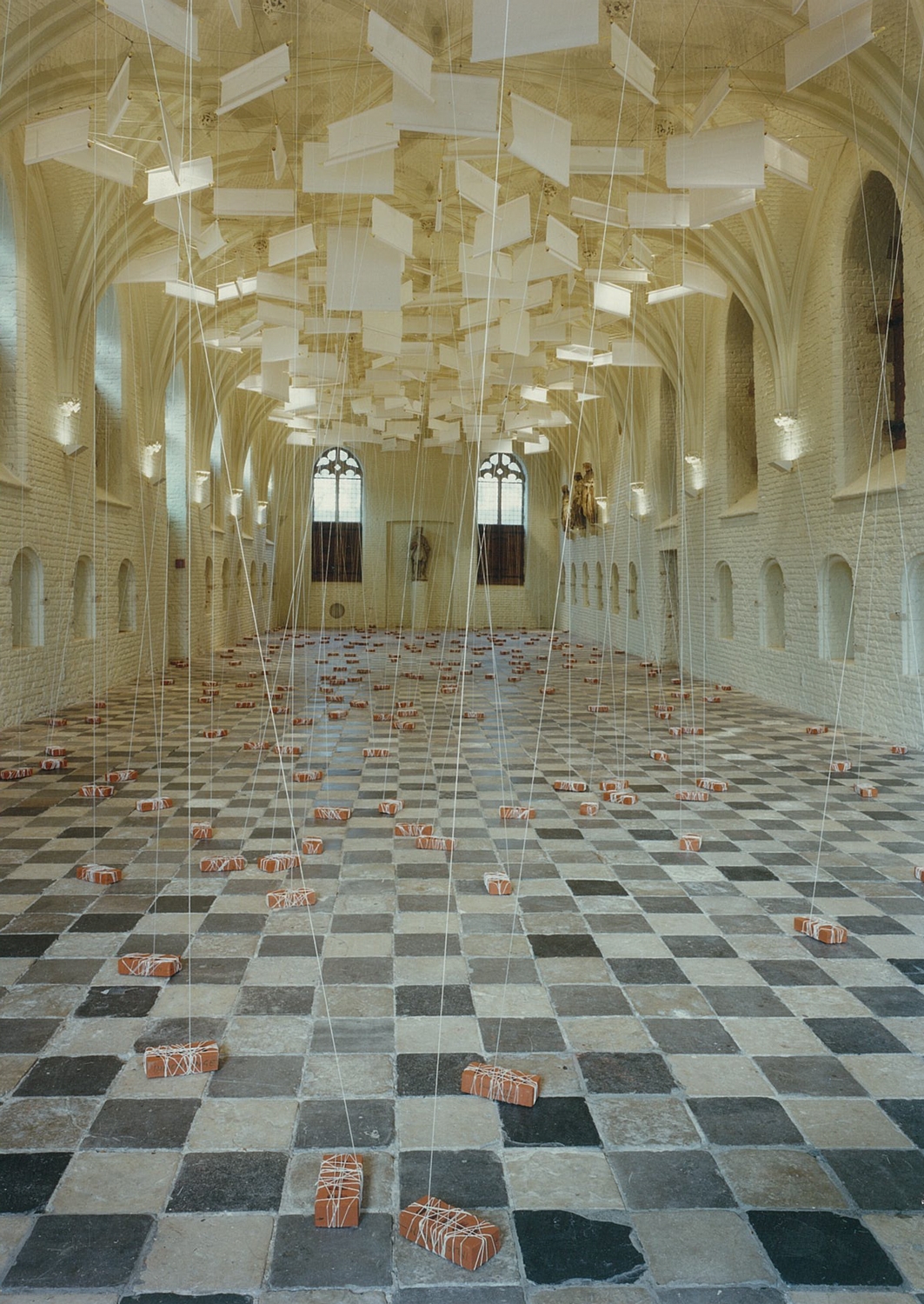E Eindigen met iets dappers A
Honoré δ' O
Solo exhibition
20 January – 25 February 1996
Vleeshal (Map)
Curator: Lex ter Braak

For each exhibition, people are invited to finish their work with their viewing. They take their impressions with them like a (succesful, unclear, failed?) photograph, while the work stays in the exhibition space.What happens to this impression (whether it is stored in the mind or memory, where it fades or stays alive) is uncertain, just as the reality of the work that goes back to the artist's studio or continue its tour along exhibition spaces.
In earlier work (including 'This is the show', Ghent 1994), Honoré δ'O tried to break through patterns by inviting the viewer to take work from the exhibition home and keep it there for him. At an agreed date, the artist would then come by to unpack the work and install it in the house. In Venice (Among others ... onder anderen: the Flemish-Dutch cooperation exhibition for the 1995 Biennale), the visitor of the Honoré δ'O domain could use a specially designed and ready-made chair. From there he could penetrate the built-up and transformed energy field in countless parts and make up his mind. Then he could write down his ideas in the booklet that awaited and indicate what work he would like to have or what desires he cherished. The spectator activated as a partner of the artist and his work.Through this arose a lively network of people who have one of his works at home, approach the artist to unpack something, or correspond with him about their desires.
With his work for the Vleeshal, this network will only be expanded. On the invitation card, Honoré δ'O people are explicitly invited and encouraged to come participate in (and finish) the work through their own actions. Through an ingenious system, countless coiled pieces of paper hang on the ceiling of the Vleeshal. Each of these pieces is held in place by a rope that is connected to a stone, serving as an anchor. The floor of the Vleeshal has become the foundation of an invisible building by all those red bricks. The visitor is asked to pick up a stone and unwind the rope from around it. Somewhere in the Vleeshal (near, far, right above the head?), a piece of paper slowly unwinds, radically changing the space.